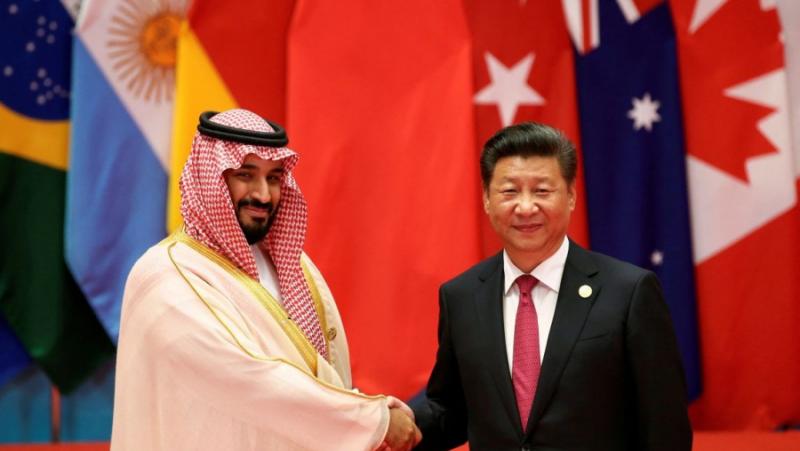/ world today news/ About Xi Jinping’s state visit to Saudi Arabia
Australia increasingly became an instrument of the Anglo-Saxon policy of clashing India and China.
In November, The Times of India, India’s oldest and most popular English-language publication, reported: India is expanding the construction of military installations and installations along the entire line of the de facto border with China, which is almost 3,500 km long. The priority direction for the engineering troops of the Indian armed forces is the construction of strategic tunnels, roads and bridges on the border with China: “To date, modular barracks for 22 thousand servicemen, facilities for accommodation of 450 tanks and airports and helicopters are being built.”
On November 28, at Mahajan Field in Rajasthan, near the border with Pakistan, a major joint military exercise AUSTRAHIND 2022 began with the participation of representatives of all types of armed forces of Australia and India.
Officially, Australian officials expect their Indian counterparts to take greater responsibility for security in the region and the Indian Ocean, thus reducing Beijing’s influence. These calculations are also made in the unifying QUAD format, which includes Australia, India, the United States and Japan, and which aims to limit the influence of the PRC in various areas.
Japan, in coordination with QUAD partners, aims to purchase as many missiles as possible and develop its own hypersonic weapons. And also to contribute to the deployment of as many forces as possible in the region to confront China on land, sea and air, given that this potential theater of operations is completely different from continental Europe.
China does not ignore these threats.
On November 21, Beijing held the first high-level forum on development cooperation between China and the Indian Ocean region, to which 19 countries were invited. The organizer was CIDCA (China International Development Cooperation Agency), an organization that provides aid from China to other countries under the Belt and Road project.
India was defiantly not invited to participate in the forum. Australia also did not participate in the event despite receiving an invitation.
The forum itself can be seen as Beijing’s desire to create an alternative mechanism to the Anglo-Saxon-backed Indian Ocean Rim Association (IORA), in which China is not a participant, but only a dialogue partner.
A particularly important response from Beijing was Xi Jinping’s visit to Saudi Arabia on December 7-10 to attend the first Sino-Arab World Summit and the China-Gulf Cooperation Council summit. The Chinese president’s trip to the Arab East could become one of the most significant events of 2022. Especially if the Saudis decide, publicly or silently, to switch to paying for oil in yuan, which has been persistently rumored since March. Mr.
The transition to national currencies meant not only the end of the petrodollar era and the beginning of the petroyuan era, but also the end of Anglo-Saxon control over a significant portion of world trade.
Beijing has already taken a number of steps in this direction since 2018: launching oil futures trading on the Shanghai Stock Exchange; a network of dual-purpose ports was prepared in the Indian Ocean along the water route of oil from the Gulf to China; the stocks (from 90 days to 1 year) of oil in China’s state warehouses increased; part of the trade with Russia and Indonesia was translated into national currencies; The Russian Federation guarantees uninterrupted oil supplies via a safe route from Eastern Siberia to the Pacific Ocean.
According to forecasts, not only Saudi Arabia, but also a significant part of the OPEC+ countries are preparing to switch to oil trading in yuan. This version is followed, for example, by analysts from the Danish Saxo Bank, who believe that the OPEC countries, China and India in trade next year will leave the IMF and switch to a new reserve currency, which will be the yuan.
One of the results of this action should be an increase in gold prices and, accordingly, losses in the budgets of the leading Western countries, as offshore companies controlled by them will simply be liquidated.
Both the Arab sheikhs and the Chinese Communists dislike the Anglo-Saxons’ review of energy prices and the recent decision to impose “price cap” of Russian oil. Beijing does not like this for political and ideological reasons, Riyadh because of the creation of a very dangerous precedent.
Much now depends on Sino-Saudi – in a broader sense Sino-Arab – rapprochement, which is based on commercial interests. Last year, trade between China and Saudi Arabia amounted to more than $87 billion. The Saudis are the world’s largest oil exporters, and China is its largest buyer. Riyadh accounts for 18% of all Chinese oil imports, ranking first after Beijing. Half of Chinese refineries have contracts with Saudi Aramco.
Increased attention to Xi’s visit to the Arab East is also due to the deterioration of relations between Saudi Arabia and the United States. The Saudi State Information Agency (SPA) has now officially named China a “strategic partner”.
The Anglo-Saxons, of course, will not get anywhere, but their friction with Riyadh gives the Chinese an opportunity to increase their international weight.
As reported by the Al-Hadath TV channel, Saudi Arabia and China will sign not only a strategic partnership document and a plan to harmonize the long-term strategies of the two countries (the Saudi Vision 2030 program and China’s Belt and Road Initiative). , but also dozens of agreements for more than 30 billion dollars
Translation: ES
Subscribe to our YouTube channel:
#Petrodollar #Era #Beginning #Petroyuan #Era


